Feed aggregator
The Way the Light Tangles
by Emmie Christie
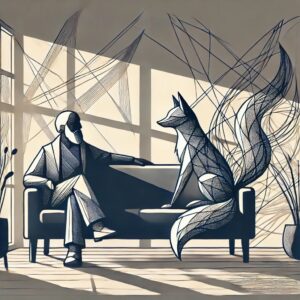 “The tixi grew on the couch to the size of a human, and its fur fluffed even more, its softness enveloping him, gathering around him like wings, reaching for what jumbled up inside him, the tangled memories.”
“The tixi grew on the couch to the size of a human, and its fur fluffed even more, its softness enveloping him, gathering around him like wings, reaching for what jumbled up inside him, the tangled memories.”
When Jan reached four years into sixty, his daughter and her son flew off into the glorious first exploration past the Milky Way to somewhere called Z-1.
He waved them off like someone in Victorian England would’ve waved off a ship headed to the New World, smiling with cracked lips, his stomach riddled with resentment. He plodded home and stared down a bottle of scotch. The bottle won.
Drunk, he studied the way of things. The way the old wooden fence withered in the bracing space winds, those that had descended on Earth hungering for trees and mountains. He studied the way the light tangled like necklaces through the trees, much too jumbled to ever wear again.
His neighbors had long since edged closer to the urban center, the pillar dedicated to the rockets, hoping that proximity meant waiting list quality. Harjit dropped by every Monday at four to deliver groceries and a pitying smile, and Jan glared at him until the young caretaker left.
When the scotch wore off, he studied the way the rain grated against his window, like a visitor who didn’t understand the social cue of what slapping your knee meant in a conversation, accompanied by ‘well,’ and ‘it’s been fun.’ He closed the curtains. Why couldn’t they all just leave him alone?
The groceries Harjit had left — fresh fruit and asparagus from R-4, and some strange new pasta they’d grown on C-13 — waited and wasted in the fridge. He ate alcohol and beans. From Earth.
The ‘letter’ arrived a month after the expedition had left, scrolling large-sized text on his wall. “We’ve settled, Dad. It’s so great here. For us, only a few days! We wrote as soon as we could.”
“That’s great, Maddy,” he wrote back, tapping on his phone.
“Have you tried to get on any planet waiting lists?” Upbeat. Positive tones, but with underlying worry.
“Why should I? It’s not like the Earth’s going to die in my lifetime.”
“Dad—”
“I’m fine here. Really.” He studied the way the words from his daughter curled around the end table, arching into geometry.
“Well, we’ve sent you a gift.”
“I don’t want a—”
Something hurtled through the wall, something wrapped in fur and energy. It landed on his couch and opened wide eyes set in a furry face.
“Oh, hell no!”
“I think you mean hell-o!” The thing — it reminded him a fox with taloned feet — wrapped its obnoxious, fluffy tail around his leg.
A tixi. Great. These things proliferated on several planets. People obsessed over them just because they could talk.
“Maddy, baby, I don’t need a pet.” Jan extricated his leg from the thing and jabbed at his phone. “I’ve had enough of them over the years when you wouldn’t walk the dogs.”
“She’s not a pet. You’ve heard of them, right? There’s lots of them here on Z-1. They’re really helpful.” A pause. “Well, gotta go. Talk to you later!” The scroll flicked off on his wall.
“I didn’t ask for you.” Jan glared at the thing. Then at the wall, where the words had disappeared.
The tixi lifted its talon and poked at the air as if lecturing in a college classroom. It spoke with a trill behind every word. “I go where I am needed.”
Great. It would shed everywhere. He stomped off to the TV room. “Stay there! I’mma pass you off to Harjit when he comes on Monday, so don’t get too comfortable.”
The tixi lay at the foot of his bed the next morning. And then on his feet the next, creating a pocket of warmth after the chill night when the space winds had roared, and the rain grated on his windows. It had grown a bit in the night to the size of a big dog, but it shrank back down when it hopped off the bed and followed him into the bathroom. The creature didn’t shed at all, at least it had that going for it.
Harjit came and went, lecturing Jan to eat his vegetables. “Ah, you got a tixi! That’s a great idea.” The young man scanned the countertops, hands on his hips. “Good job keeping the place clean. Here, I got something for you. It’s from Y-12.”
The white plant curled in a sinister way, like a mustache on an evil Santa or something, and Jan shoved it to the back of the counter away from the light. The tixi watched him.
Dang it! He’d forgotten to give the creature to Harjit. Oh, well. He could do it next Monday.
That Sunday night, the tixi asked, “So, what do you do for fun around here on the old Earth?”
“Nothing, if you’re also old.” Jan popped the cork on another scotch. “Sit and wait around for groceries that we don’t eat.”
The creature nibbled at a talon, then brought in the paper and did the crossword. It puzzled for a while over a clue. “Alright, help me out here,” it said. “Red bird. Eight letters.”
“I didn’t ask to play.”
“What else are you gonna do? Red bird, come on. This one is supposed to be easy for humans.” The tixi sidled up to him on the couch, brushing its soft, glossy side against his hand. It grew a little bit, its fur fluffing out like it had dried itself on a heating vent.
He sighed but allowed it to stay next to him. “Cardinal?”
“Nice. That fits. Okay, what about this one. Six letters, the clue is ‘knot.’”
Jan almost said it, then his tongue tripped over the word, and his breath lodged in his throat. He reached for the tixie’s fur and buried his face in it.
The tixi grew on the couch to the size of a human, and its fur fluffed even more, its softness enveloping him, gathering around him like wings, reaching for what jumbled up inside him, the tangled memories.
Maddy, in her prom dress. His little girl, ready to leave for the big girl dance, bright-eyed and bright hoped. Grace would’ve known what to do, but he didn’t even know what to do with his hands. Had they always been so long and dangly?
She smiled at him and pressed a necklace in his palm. Giving him something to do, to fidget with while she got ready. “I’ll be alright, Daddy. Here, can you untangle this knot for me?”
He stayed for a moment in that moment, in that precious second that glimmered in his mind.
“Damn you!” He ripped away from the tixi, panting, fists clenched.
“Is something wrong?” Its growth paused. It still resembled a fox with those ears, but its fur had splayed out like an eagle’s giant wings. “Your eyes requested comforting, did they not?”
He staggered, dropping the scotch bottle on the carpet. It bled pale yellow on the carpet. First Grace had died, then Maddy had taken her son to space. They’d all gone so far away.
“Earth-man?” The tixi brushed a wing against his arm. “Are you well?”
“Does it look like I’m well? You damn well did this to me!”
“Should I alert a doctor?”
He sank into the couch cushion and covered his eyes. Tears slid between his fingers. “Just clean that up, would you? Can you do that at least?”
He fell asleep on the couch and woke up warm. Well, the tixi had slept on him. He grimaced, heaved the creature off — it had shrunk back again to normal fox-size — and lumbered to the kitchen to make coffee. The stain from the spilled scotch had vanished. “At least you’re good for something,” Jan said.
The strange plant from Y-12 that Harjit had brought seemed different somehow. It curled up like a swan’s neck, not sinister at all, but graceful and fluid. He pulled it out of the dark part of the counter, into the light.
He poured his coffee and huddled outside. The tixi preened next to him, tail curled around her talons.
The way the light tangled in the branches’ shadows…
He growled. Tears dripped down his cheeks, a few dripped into his coffee. He glared at the tixi. “Alright. What the hell did you do to me? Did you slip me some stupid pill?”
“We tixies specialize in comfort. You had a coating of pain over your eyes, and it seems that is now gone.”
He had heard the stories but had never believed them. “That’s a load of hippie space-trash.”
He trudged inside the house and reached for a vodka this time, something more potent that looked like water. He could drink more that way, pretending.
But the bottle had a wrongness to it; it bulged in a way that repulsed him. He slammed it back down and whirled on the tixi. “This is ridiculous. I didn’t ask for this — this difference in my eyes! I just hugged you!”
The tixi promenaded through the door and draped her tail around her talons. When had he started thinking of it as a she? “Cleaning and comforting are the same to us tixies and produce the same results. I cleaned the alcohol out of the carpet by comforting the floor, you know.”
“Bullshit! This is such bullshit! How dare she do this!” He grabbed the bottle of vodka, gripping it through the anger. Upended it in his mouth, forced himself to swallow.
It tasted like piss. Well, it always had, but for some reason, now it bothered him, and it bothered him that it bothered him.
What, he couldn’t even drink anymore? Maddie had stolen that from him, too?
Sober, he decided to cook some food. Harjit hadn’t come with a new batch yet this morning, and mold grew on some of the strawberries, but he could still use that C-13 pasta. He ate some of that with alfredo sauce, and it tasted good.
He hated that it tasted good.
He hated the way the fence outside made him want to fix it instead of letting it rot. He hated that he had dragged that stupid white plant into the sunlight on the counter. He hated the way that the leaves played in the space-winds, laughing and twirling like children. He hated the way Maddy had held her son’s hand and waved to him with the other, as if she could have both — even when she was the one who had left. He hated the way— hated—
He cried.
He loved her. He missed her. But he wanted her to be happy.
The tixi wrapped her tail around his feet. He allowed it.
“Guess you’re not really a pet,” he managed to say. “And you clean things pretty well.” He held out his hand. “You can stay, if you want.”
The tixi wrapped her talon around his hand and shook it. “I stay where I am needed.”
* * *
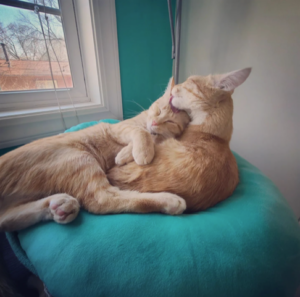 About the Author
About the Author
Emmie Christie’s work includes practical subjects, like feminism and mental health, and speculative subjects, like unicorns and affordable healthcare. She has been published in various short story markets including Daily Science Fiction, Infinite Worlds Magazine, and Flash Fiction Online. She graduated from the Odyssey Writing Workshop in 2013. You can find her at www.emmiechristie.com or on Twitter @EmmieChristie33.
The Wolf, the Fox, and the Ring
by Mocha Cookie Crumble
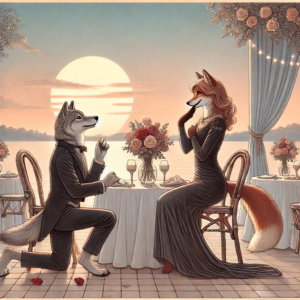 “Now that the moment was here, everything seemed so simple.”
“Now that the moment was here, everything seemed so simple.”
The restaurant Koda had chosen was beautiful — seating along the water, with fairy lights sparkling overhead and a rose on each table. With the sun setting over the ocean, casting a warm light over the earth, it was as romantic as you could get. So why was he so nervous? He resisted the urge to slick his soft ears back, instead facing them forward as he spotted Lilian.
Oh, she was beautiful, never more so than tonight. Her fur was sleek and orange, her tail fluffy and swaying as she walked. A tight black dress hugged her hips. The sunset played up the pink-red tones of her eyes. As soon as she saw Koda, though, she lit up like a beam of light and dashed over, nearly colliding with a waiter.
“I can’t believe we’ve been together a year!” she cried. Her paws did little tippy-taps on the edge of the table.
“Hello to you, too,” Koda said, laughing.
“A whole year. Feels like it was only a couple weeks ago that I poured soup in your lap.” Koda started to speak, but she was too excited and went on: “I got you a present!”
Koda grinned. “I, uh, I got you something, too,” he said. “Something small.” Very small. He could feel the weight of it pressing against his chest pocket.
“Mine first,” Lilian said. She presented a clumsily-wrapped box, about the size of a loaf of bread, with a big grin. “Open it, open it!”
“I’m getting there, slow down,” Koda said, laughing again as he ripped the paper. Since the start, she’d made it so easy for him to laugh, and it had never worn off. He reached into the box and pulled out… a plush cat.
It was covered in patches. The ears were new, the paw pads fresh, one of the eyes replaced with a shiny button. Koda’s hands trembled, and his eyes filled up with tears. “Mister—M-Mister—” He couldn’t get the words out, so he gestured tearfully.
Lilian beamed. “Your mom found him in a box in the attic,” she said. “I’ve been fixing him up for months now — it’s been so hard not to tell you! Good as new, right?”
Koda wiped his eyes and hugged Mister Softie close to his chest. The weight in his pocket was practically burning him. “Thank you so much, baby,” he said, leaning over the table to kiss her. “Do you— do you want yours now?”
“Yes! Yes, please,” she said, doing little tip-taps again. God, he loved those tip-taps.
Oh, god, this was it — this was the moment. He put Mister Softie down on the table and stood up, his ears flicking against his will. His heart pounded. He pushed his chair out of the way.
Lilian cocked her head. “What are you doing? Why—”
He got down on one knee.
“Oh my god,” she said, her eyes widening. “Oh my god, oh my god!! Are you proposing? Are you— I love you! I say yes!”
Koda couldn’t help but laugh again, and she giggled with excitement. “Baby, I haven’t even gotten the ring out,” he said.
“I know, it doesn’t matter, I say yes,” she said with a grin. “Sorry. Sorry, we should do it properly. Okay, go, you can start now.”
His hands were so much steadier now as he pulled out the box and opened it. A sapphire set in a silver band glinted up at Lilian, who put a paw over her mouth. Koda had practiced this moment a thousand times. Would he say her full name? Go on about how the last year meant so much to him? Talk about the best parts of her? Now that the moment was here, everything seemed so simple.
“I love you,” he said. “Marry me?”
She dove out of her chair to kiss him, sending them both tumbling to the floor.
* * *
 About the Author
About the Author
Why does this author sound like a Starbucks order instead of a person? Because Mocha Cookie Crumble loves the sweetest, coziest things in life! Mocha writes to give everyone a warm place to rest. She enjoys bringing fursonas to life via commissions and often writes outdoors. (Yes, she likes Starbucks. No, she didn’t intend to name herself after a frappuccino… but she has no regrets!)
A Colony of Vampires
by Beth Dawkins
 “The colony mentions my notes, singing it over and over again, but I do not hear my mother’s song claim me as her daughter.”
“The colony mentions my notes, singing it over and over again, but I do not hear my mother’s song claim me as her daughter.”
My talons pierce the back of a Tsintaosaurus. I roll forward, sinking my fangs into its hide. The blood tastes unlike the sweet, life-giving nectar of yesterday. It is foul and sour with a stench that coats the inside of my nose. I hear a song of discontent from one of my sisters. Another song splits the air. I pull out my fangs, and my mouth tingles. There is a sandy consistency that covers my tongue.
We need the blood. The hungry and the young will die without it. We scream out frustration until I am sure our song will attract the Qianzhousaruses who watch over the Tsintaosaurus herd. Not that they can catch us, they lack wings with only tiny arms.
That does not stop them from murdering members of the herd. We only take sips of blood, leaving the creatures alive for another night.
It is what makes us Jeholopteruses.
A male calls us away. His song is demanding, and I open my arms to the sky, flapping with the others. Sandy blood is gathered in my mouth, and I let it sit, stinging my tongue. My mother’s song joins mine. I hear her flapping beside me. She is unsteady, and her song is hungry. I hear the cry of a sister who is falling, her arms tingling and uncontrolled. Would my wings refuse to work if I had any more of the blood? My heart cries out in a song that joins the colony’s. It pierces the night like the hundreds of stars above us.
“Do not turn back,” my mother sings. “Home, we must go home.” We join her chanting.
We have no blood to share. The young ones will lick it from our chests and mouths, but it won’t be enough.
The cool dark of our home is a frenzy of activity. The others rush to greet their families. My sisters come to us but hesitate when they hear our song. “Wrong, wrong,” it cries. “The blood is tainted.”
My mother crashes at my side, and there is a sharp stab of pain in her song. I rush over to her as she straightens. One of her wings is hurt. The delicate membrane bleeds, and the little ones gather around the wound, waiting for sips.
“Get away from me,” she snaps at all of us.
“You’re hurt. I can help you,” I say.
“Why are you still here?” she demands, her voice sharp. “I have had enough of you.”
My sisters refuse to look at me. They stare at the floor and the walls, gathering little ones to them. Our father and leader is listening to a wife tell him the story of our hunt.
“Mother—”
“Am I? You are past the age to find your own family. You should fly away while you are strong, or maybe you should die in the day.” Her eyelids hang low, and she allows a few little ones to lick at her wound.
She’s never hinted at disapproval. I’ve always helped to feed the young ones on bad hunting nights, risking my own death in the daylight.
I take a step back, hoping for help from my sisters, but they stand at a distance. Their songs are silent. It is plain that they’re resolute in my mother’s decision to cast me out. Our father ignores what is happening.
I have nowhere to go.
* * *
Sunlight streams through the cave entrance. It is too bright and warm. My song is drowned out by cries of grief for those too weak to live. Suffering surrounds me as I grieve my family. My self-indulgence turns into sorrow that is edged with anger, like a pain in my chest that is echoed by the empty pit of my stomach. I was run out as if I were a brother.
The air is too hot, and the light turns blinding. The taste of bad blood lingers. I could fly into the day, but my limbs are as heavy as stones and I am tired. I climb onto a shelf, sheltering against the sunlight, and there is another body, smaller than me. She is shaking and curled around herself.
This is what happens when we don’t get enough to eat; we die.
“Are you hurt?” I ask.
She doesn’t answer me, but opens her mouth for her song of hunger. I nuzzle her, getting her to cling to my body. Her mouth touches my shoulder. Her fangs sink into my skin, and the pain is nothing but a sharp release of tension.
I close my eyes and run my thumbs through the stranger’s fur. Her fangs let go. She is careful, delicate. None of us is that delicate with the herd, only one another. I huddle against her, and we sleep.
When we wake the light is dim and colony’s song is soft. The melody refuses to rise or fall as our voices melt into one sound. The words of the song say, “I am here,” and “I am alive.”
There is an undercurrent of hope. “We will survive.”
My voice rises to sing about survival. The notes fill the pain in my chest. I had not died in the day. I’d lived.
A female climbs down the shelf and bends her head low to the one still sheltered beside me. “You fed her?”
“Yes,” I answer.
“Thank you.” She crosses the distance between us and wraps her arms around me, and her wings press me tight. “Would you like to hunt with us?”
I take a step back when she releases me. She smells of pine and mud.
“Is she there?” a male asks, climbing down.
I take another step back, but then wonder why I am concerned.
He is small, smaller than me. His hair is lighter and with dark spots by his eyes.
“She shared her food,” explains the female.
The male inspects me. He is their leader, but different from my father. These, I believe, are his wives. He’s young, maybe even younger than me.
The colony is coming awake. The song turns towards grief and hunger. Many died in the day, and now I too need to feed. Fear of the wrong tasting blood is ripe because we all must fly into danger.
“Will you hunt with us?” the female asks.
“Yes, but we must do something different. We can’t keep drinking tainted blood.”
“There are other herds,” the male says.
We can’t look at one another, because the only other herd is too far for our hearts and wings without food. The silence between us stretches into a song of hunger.
“We should watch the herd and find out what has changed,” I offer. They are ours, and maybe we have allowed others to care for our food for too long. “The old song says that we are better than the Qianzhousaurus,” I remind them.
For the first time I will not fly out of our cave with my mother or sisters. Do they miss me? Does my mother regret what she has done? The urge to sing lifts from my chest.
“Let us go,” I say to the others, and then reach for the sky.
* * *
The first dead body I had encountered was a fallen brother. Brothers leave the nest, eager to start families and become leaders. This dead brother fell from our perch before his time and did not get back up.
A few from every nest yearn to fly too early.
His mother stayed by his side, and my mother fed her in the early morning. I remembered his mother’s song and how his eyes stayed open. He smelled of blood, food, and had no song to sing.
We are creatures of song and sky, blood and pain.
I cling to a branch overlooking the herd. They gather by their watering hole while three Qianzhousaurus approach. Their tiny hands run across the herd’s flesh. The herd has lost their fear of the predator’s talons. There is a kind of beauty to the systematic cycle of birth and death between them.
The male at my side sings of life. The song is about only taking what we can use and letting the herd live longer. We are benevolent predators.
Other Qianzhousauruses come; one has something around its neck. They pass it around, spreading it on their tiny hands. It smells sharp, acidic. The Tsintaosauruses cry out in protest but let them rub the powder into their feathers.
Our song changes because we know what it is. “The Qianxhousauruses are trying to poison us,” we sing for those who are coming.
But we don’t have to drink from the herd.
“We drink from the Qianzhousauruses,” I say, my hunger curling in my stomach.
“They will kill us,” says the wife.
I shrug. “Some, but if the colony drinks from the herd many more will die. If we drink from the Qianzhousauruses more will survive longer. They have struck the first blow against us. We have to strike back, and maybe they will realize that we must share the herd.”
Would my mother be proud of my idea? What would she think when she heard our song, would she hear my voice in it? My heart fluttered with hope. She might take me back.
The male at my side is the leader of a new family. Young families had limited time to prove themselves in the colony, and if we pulled this off, their status would rise.
He sent the wife back to sing our plan to the colony. “Will you join our family?” he asks.
“I have nowhere else to go.” The words escape me, and my grief rushes out in a ballad of every near sorrow.
“Your mother was a fool,” he whispers and nuzzles my side.
I do not want her to be a fool. I want her to care for me, to hold me close. Her disfavor leaves me hungry, like the powder that stings my mouth and haunts us. I imagine her arms open to me, and she asks my forgiveness in song.
I shake the male off. “We should get ready.”
* * *
Mauve settles between the trees as the sun fades, making it easier to see. The Quianzhousauruses have finished spreading the powder over the herd. Even from our vantage the stinging powder tickles my nose. The colony is a distant song. I can almost make out the words in their melody.
“Now,” I command and lift into the air. I want to be the first to strike. If I perish, the others will still follow. They might ignore the song of the wife we sent, but they will not ignore three songs.
The Qianzhousauruses are smaller than the herd. Their bodies are slick with back legs made to run and teeth that come to sharp points. They do not have a song but squeak and purr in a language we cannot understand.
They have feathers like the herd, but unlike them their feathers are thinner in places. I’m close to one of their backs. I spy where an old wound has left this one featherless. They must see us, but they keep walking, unconcerned as I land.
I plant my back talons into the hide for purchase. There is a high-pitched scream that echoes into the night. The colony hears it, and their song changes. They are close.
I dig my fangs into its flesh, working my bottom jaw as life-giving blood gushes into my mouth. It’s warm and savory. My mouth tingles with a pleasant spice that follows the blood down my throat. Energy fills my limbs, but then everything moves around me.
The colony has arrived and splits into two groups. One group screams over the herd in confusion, and the other splits off, diving for the Qianzhousauruses.
The Qianzhousauruses twist and turn. My head slams back. My fangs tear at flesh, aching as they are ripped out. I cry as my back talons slice the hide. Its feathers are slick with blood as I rake my talons against it, searching for purchase. The wet feathers slip away, and I start to fall. I open my wings, trying to catch the air, but I am tumbling and rolling.
My breath is knocked from my lungs as I hit the ground.
I tuck my arms in as pain slams each bone in my body. I choke and cough on half-swallowed blood. The Qianzhousaurus massive back feet slam into the ground.
I run in the tall grass, ignoring the pain that throbs in each limb. I don’t know which way I’m running, but I hope it’s closer to the herd. The colony descended; their song is everywhere, refusing to tell me the direction of home or the trees. I only have the tall grass and my own song.
The male lands before me. “This way,” he calls, and I follow.
“It is too dangerous on the ground,” I protest.
His song changes into one of amusement with a healthy dose of fear and excitement. “You have changed us.”
No, I think. “Maybe they will stop putting the powder on the herd and share.”
We grow silent, climbing the bark of a tree to watch the colony feast. I shiver once we are on a stable branch. I close my eyes, listening for my mother’s song. The colony mentions my notes, singing it over and over again, but I do not hear my mother’s song claim me as her daughter.
The male presses his side into mine, and I bury my face into his fur. The colony is saved, but my family has not taken me back.
* * *
The colony gives us a new perch. We’re the smallest and youngest family that has ever been granted a perch this high within the colony. There are two wives, counting me. The third, the one that went on the hunt with us, died on the back of a Qianzhousaurus. My note in the colony’s song turns into a hero’s melody, even among grieving families.
I climb down to the perch where I lived before, worried for my mother. I see the outline of her back and hear her song. She is leaning over one of the young ones, making sure it has a full belly.
“What are you doing here?” she asks, when she hears my song.
“I wanted to make sure you were okay.”
She would not have come to see me. My throat hurts and my heart breaks all over again.
“If I had not pushed you out, would you have saved us?”
Heat licks my belly and travels through my limbs. “Yes,” I spit. “We needed to eat; you had nothing to do with that.”
“I know you. I know you better than anyone. If I had not done what I had, then you would not be who you are now.” She stands taller, moving her shoulders back and making her wings twitch.
She is wrong. The realization is like being thrown out of the nest for a second time. She could not have known I would have thought to attack the Quianzhousauruses — I had not known.
“I made the right choice,” she insists. “I made you who you are.”
I take a step back. Forward is violence and breakdowns. There is a young one who gazes at me from behind her.
“She will never love you like you love her,” I warn the young one.
There is bitterness in my song as I turn away.
She calls to me, but I cannot go back.
My sister-wife, the one I gave blood to, licks my cheek as our mate huddles next to us. His song is tired and grief stricken, but it is also resolute, because we are together.
We chose one another, and we will make the same choice each day.
* * *
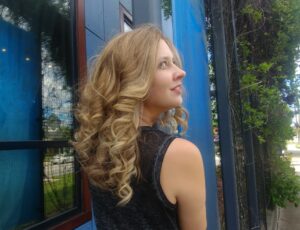 About the Author
About the Author
Beth Dawkins grew up on front porches, fighting imaginary monsters with sticks, and building castles out of square hay bales. She currently lives in Northeast Georgia with her partner in crime and their offspring. A list of her stories and where to find them can be found at BethDawkins.com
FurUM 2024: Record attendee and charity donation count mark new high point

FurUM 2024:参会人数、慈善捐款双双创新高
Bearly Furcasting S5E13 - When Everything is Said and Done
MOOBARKFLUFF! Click here to send us a comment or message about the show!
Bearly, Taebyn, Rayne, TickTock and Cheetaro gather for another raucous Episode of BFFT! Taebyn finishes the Hear Bear Roar book. We talk about media, mathy things, hear some furmations, and learn some new words. Teabyn gives us some Lateral Thinking problems and the team describes their favorite ‘math’ thing which brought us to finger math. As usual we go off the rails a few times, but still we manage to get through the episode. So tune in because you won’t want to miss any exciting moments here on BFFT! Moobarkfluff everyfur!
Furry Masterclass Series - Nuka | "Furscience: Psychology of Furries and the Furry Fandom"
This podcast contains adult language and adult topics. It is rated M for Mature. Listener discretion is advised.
Thanks to all our listeners and to our staff: Bearly Normal, Rayne Raccoon, Taebyn, Cheetaro, TickTock, and Ziggy the Meme Weasel.
You can send us a message on Telegram at BFFT Chat, or via email at: bearlyfurcasting@gmail.com
Ruff Is Ready
Apartment D Films is an independent stop-motion animation studio who made a name for themselves creating unique (and wonderfully weird) commercials for Mattel toys. Now, after a successful Kickstarter campaign, they’re ready to launch their first original full-length series, Ruff Ruff Danger Dogs. “In the series, Earth has been locked in an unending struggle against Galactic Evil for a century. When the planet’s mightiest heroes sacrifice themselves to buy the world one more fighting day, humanity must seek out the five ‘goodest’ beings on the planet – The Ruff Ruff Danger Dogs! Can these once-abandoned pets learn how to pilot mecha and unlock their true potential when they’re still getting housebroken?” Animation World Network has an extensive interview with the creators, and preview videos. The series premiers this month on YouTube.
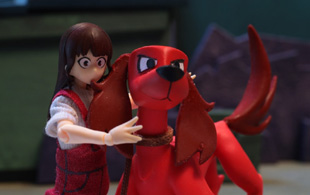
image c. 2024 Apartment D Films
Piece by Piece - Paint & Sell Prized Possessions as a Fox

Developed by Gamkat and published by No More Robots, Piece by Piece is a new game where you relax and play as a little fox who runs a repair shop; fixing, building, painting and reselling all sorts of curious items from a model cat all the way to binoculars. Enthrall yourself in the townsfolks stories, battle them in a game of 'Bear, Fish, Bee' and grow plants to create pigments for paint to decorate your newly fixed items. I love the little ways you can customize the items and shop you have with paints, and the fluffy and cute cast of characters that inhabit this lovely little world so far! Check out the announcement trailer below and wishlist the game on Steam!
The trailer was revealed as part of the Wholesome Snack: The Game Awards 2024 Presentation
S11E14 – Common Not So Common - Did you know that some furs get a little kinky? There are many kinks that are common in the fandom but not so common elsewhere. What kinks are furry exclusive or maybe just haven't been embraced by those outside the fandom?
Did you know that some furs get a little kinky? There are many kinks that are common in the fandom but not so common elsewhere. What kinks are furry exclusive or maybe just haven’t been embraced by those outside the fandom?
Join Nuka, Roo, and Sammy as they talk about those kinks. What they are. What we like, or even, don’t like about them. And discuss why or why not they’re seen outside the fandom.
NOW LISTEN!
SHOW NOTES Thank you!To all of our listeners!
PATREON LOVETHANK YOU to our patreons! You help us keep the show going!
A Cookie Factory – OwO
A Pallet of Cookies


Barnaby Panda, Nuka, Lou Duck (Pic Pending)
A Case of Cookies

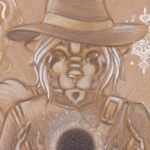

Basel the Dragon, Black Baldrik, Ichigo Ookami (Pic Pending), Lufis the Raccoon
A Jar of Cookies
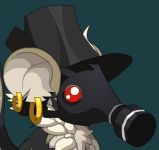
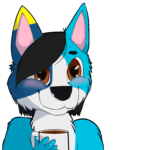

MephistophEli, Plug, Tenax
A Box of Cookies
- Chaphogriff
- Lygris
A Delicious Cookie
- Ausi K
- Christian
- Citrus Fox
- Icy Solid
- Sage Lightfang
- TyR
- Victor Mutt
- Intro: RetroSpecter – Cloud Fields (RetroSpecter Mix). USA: Unpublished, 2018. ©2011-2018 Fur What It’s Worth. Based on Fredrik Miller – Cloud Fields (Century Mix). USA: Bandcamp, 2011. ©2011 Fur What It’s Worth
- First Break: Zenith – Aaron Kruk, Argofox, Creative Commons 2024
- Second Break: Mystery Skulls – Ghost. USA: Warner Bros Records, 2011. Used with permission
- Third Break: NSP – Orgy for One, Used with permission
- Patreon: Inflammatus – The Tudor Consort, Creative Commons 2019
- Closing: Cloud Fields (RetroSpecterChill Remix), USA: Unpublished, 2018. ©2011-2018 Fur What It’s Worth. Based on Fredrik Miller – Cloud Fields (Chill Out Mix). USA: Bandcamp, 2011. ©2011 Fur What It’s Worth
Capy Castaway - Reveal Trailer

You can never have enough capybaras. At least that's our opinion! Luckily, the developers at Kitten Cup Studio have the same opinion, and they just announced (and revealed a trailer) for their new upcoming game, Capy Castaway. In Capy Castaway, "Embark on a whimsical adventure with a capybara pup and a clever crow as they set off to find their way home! Sniff, dig, and explore a vibrant world brimming with wonder, challenges, and heartwarming friendships at every turn." The pairing of Capy and Crow looks to be a creativity-filled duo that encourages the player to explore with childlike wonder the possibilities around them. Plus it's by the same developers of "Pekoe" AND features the composer who did the music in "A Short Hike"?! We can't wait to see more!
The trailer was revealed as part of the Wholesome Snack: The Game Awards 2024 Presentation
Hey, Loona! This One Of Yours?
Another comic book that slipped beneath our radar, but at last we can tell you all about Howie the Hellhound from Scout Comics. “Satan’s favorite pet, a Hellhound named Howie, escapes the pits of Hell and settles down with a human owner, Louise, in New York City. But when Hell’s forces rise to take back what’s theirs, the pair must find a way to come out the other side and earn the fresh start at life that they both crave. Howie the Hellhound is a supernatural dramedy filled to the brim with heart, danger, and laughs, along with a sprinkling of fire and brimstone!” And likely the kitchen sink! Written by Jared Prestwidge, Howie is illustrated by Simon Robins and Carlos Trigo.
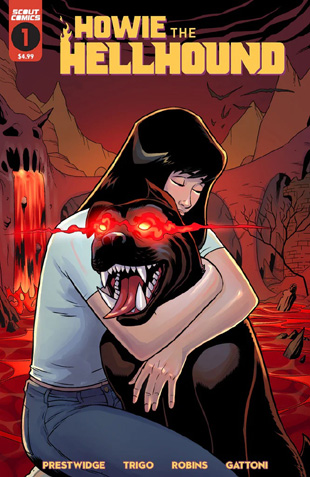
image c. 2024 Scout Comics
"The Raccoon's Den" is over... What happens now?

Is this goodbye? Here's an update. "ROADS AHEAD" Pt. 1: https://youtu.be/uqNJB-ELOv8 "ROADS AHEAD" Pt. 2: https://youtu.be/TlwNJmnvCGw Follow Bandit: https://www.youtube.com/@BanditTheRaccoon BcB's "YEAH, LET'S EAT THIS!": https://www.youtube.com/@YeahLetsEatThis Fursona Artwork: Weka (https://twitter.com/DrawsWeka) Series Logo: Fifth Forager (https://linktr.ee/FifthForager) See more at www.TheRaccoonsDen.com CHAPTERS 1: Intro: 0:00 2: Distance: 1:28 3: Scheduling: 1:52 4: Other projects: 2:09 5: Personal Interest: 2:18 6: Channel's future...: 2:50 -------------------- MUSIC BY: Zapper the 3L3CTR1FY1NG: https://soundcloud.com/zapper-the-3l3ctr1fy1ng Andre Abreo: https://andreabreo.bandcamp.com/music FACEBOOK: http://www.Facebook.com/TheRaccoonsDen TWITTER/X: http://www.Twitter.com/TheRaccoonsDen FURAFFINITY: http://www.FurAffinity.net/user/TheRaccoonsDen INSTAGRAM: http://www.Instagram.com/TheRaccoonsDen TIKTOK: https://www.tiktok.com/@theraccoonsden #TheRaccoonsDen #TRDs9 #furryfandom
Adults of Child Abuse Often Become Child Abusers Themselves
I'm probably not the sort of fur you usually get questions from, but I'm hoping you can give me a little advice.
Soon both of my parents will be gone. Dad passed five years ago and mom just entered hospice. They both were mentally and physically abusive, something they never admitted or attempted to make right. It's taken me decades to process and overcome the abuse. My brother never did and I've witnessed him exhibit some of the same abusive behaviors with his own children.
Over the Thanksgiving holiday my brother mentioned that he was alone. He's divorced, in awful health, and more or less estranged from his two kids. He seemed to be asking for help and, being a helpful fox I want to do something... but can and should I?
I'm thinking of laying it out on the table for him... telling him he needs to seek counseling, he needs to hear and accept his children's feelings, and most of all change. But am I rushing in where foxes shouldn't tread? I've mostly dealt with my demons, am I opening old wounds when I can't really do any good?
Yours,
Foxfire
* * *
Dear Foxfire,
Thank you for your intriguing email. I am not unfamiliar with situations like your own in which an estranged family member tries to make their way back into your life. The first question you must ask yourself is this: Are they only doing this because they need money or to otherwise take advantage of you, or are they sincerely reconnecting? For example, someone close to me has a son who cut off ties because his father came out as gay, but this son occasionally contacts him--not because he misses him, but because he wants to hit him up for money. How touching.
On the other paw . . .
It is an unfortunate truth that oftentimes a victim of childhood abuse like your brother will, when they become parents themselves, abuse their children in turn. I believe the statistic is about one-third become abusers. You didn't, but your brother did. Unlike your brother, you did the homework to deal with the psychological scars head on. As you know, that is a lot of work and takes a lot of time. Your brother, though, did not deal with his feelings, and so, as is often the case with people who don't deal with their emotions, those negative feelings have to come out, and they can do so in violent ways. My sister did something similar. She was raped by our grandfather when she was a girl and never really dealt with it, so she became an alcoholic and a very angry person instead.
Because your brother did not deal with his issues, it has cost him his wife, his children, and his health. Now he has hit bottom. What is actually a promising sign, however, is that he is now reaching out to you for help. As long as the warning signs I mentioned above (asking for money and so forth) don't come out, I think you would be a good brother to offer him a shoulder to lean on. You don't have to go way out of your way to do this. Just listen, give him a sympathetic ear. Maybe see if you can help him find a good counselor, because you are right: What he really needs is some good, solid, professional guidance on the one hand and a bit of emotional help (you) on the other. Obviously, this doesn't mean you are "taking his side" or condoning what he did to his kids. I'm thinking a heart-to-heart between you two will show that, deep down, he knows what he did was wrong, and there is a good chance he really doesn't understand why he did it. He just knew he was in pain and he didn't know how to handle it in a healthy way.
A good place to start is the website Help for Adult Victims of Child Abuse. Perhaps, if you have not done so yourself — and even though you seem to be coping pretty well — you could benefit from looking this over, too. Maybe do so before you talk to your brother.
To answer your question, then: Yes, be there for your brother if you can. More than almost anyone in the world, you will understand him because you grew up in the same household. Don't be preachy or pushy. Just start by telling him he can talk to you, and you will listen. Then, perhaps go on this journey together of talking to counselors. Even though you are okay (it seems, mostly), if you do this together that will be of IMMENSE help to your brother — and bless you for doing so.
This is a bit of a tricky road, though. Make sure he doesn't take advantage of you but do be there for him emotionally. Do you think you can manage that? It is okay if you feel like, emotionally, you are not up for a task that can be a pretty hefty burden, so don't feel guilty if you honestly don't think so. But if you do, that would be a terrific thing to do.
Let me know if the above helps or you have more questions.
Bear Hugs,
Papabear
Sonic X Shadow Generations Review - A Look Back and Forward

Sonic the Hedgehog, a name many know and love. And what a history he has. Much like the loops he speeds through on his way to stop Eggman, Sonic has had a lot of ups and downs. His early days on SEGA consoles solidified his popularity. Then in 1998, he made his first jump to 3D with Sonic Adventure. The early 3D era went well enough until it started going downhill with the divisive Shadow the Hedgehog in 2005 and the disastrous release of Sonic ‘06 a year later. To say ‘06 severely damaged Sonic’s reputation is an understatement. It took years before the Hedgehog recovered and was back on his feet. 5 years later in 2011, Sonic Generations released as a celebration of the Hedgehogs 20th anniversary at the time.
Wolf in Sleuth’s Clothing
Another pair of authors we met at Loscon — authors who work together, in fact. Aynsley J. Fraser and Lita Hunt are the creators of the Moonlight in Glenwood series of urban fantasy novels. Here’s the tag for the first book, Moonburn: “Evie and Laika are werewolves working part-time as Moonlighters for the supernatural task force MOONS. When trouble is afoot, their pack called ‘Night Claw’ isn’t getting the call. No one, supernatural or not, believes a pair of barely trained, late twenties werewolves are ready for more than domestic disturbances. However, when a magical murder mystery rocks the werewolf packs of Los Angeles, it’s all moonlighters on deck. With supernatural suspects ranging from vampires to witches, no clues to go on, and murders starting to pile up, the Night Claw werewolves finally have an opportunity to prove themselves and potentially become full-fledged Moonlighters. Can Evie and Laika solve this mystery before more murders spread through Glenwood?” Visit their web site to find out more about this and other books in the series.
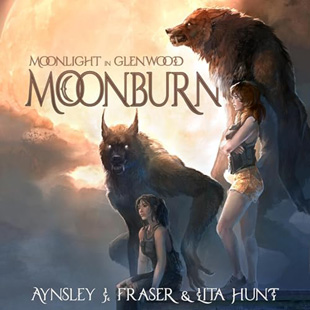
image c. 2024 Fraser & Hunt
Uncle Chop's Rocket Shop Review

Out of nowhere, your ship starts to sputter. Your oil is low, your radiation analyzer and tomfoolery modules are on the fritz, and you have to make a quick decision. Luckily, you look on your intergalactic map to see that Uncle Chop’s Rocket Shop is within landing distance. You’re able to touch down safely on the platform and are met by a four-eyed “fox where it counts”, who leads you into a coffee shop before getting to work on your ship in need. That’s where you come in, playing that fox guy and helping customers in need so that you can pay R.E.N.T. to your employer before he murders you for being too much of a financial liability. Oh, and what a joy this arrangement is, as Uncle Chop’s Rocket Shop is an employment contract I’d sign again and again.
Is the Rise of Furcon Attendance a Serious Problem for the Fandom?
Some months back, Soatok published this article on the explosive growth of the Fandom.
What are your thoughts on it, and the discussion surrounding it? Can we fight these problems? How? Is it too late?
Boyesh
* * *
Dear Boyesh,
Thank you for your email and sorry for the slow reply!
An interesting and timely question, and thank you for asking. The fandom is, indeed, growing by leaps and bounds, and a number of furcons have extremely high attendance rates. However, as much as I like Soatok, I think they are spazzing out a bit. Yes, Midwest Furfest had over 15,000 attendees, but compared to Comic-Con in San Diego, which had about 135,000 fans this year, it's peanuts. New York's Comic-Con had even more at 200,000 attendees in 2022. You don't see people giving up on comic-cons, do you? So why would they give up on furcons that have a tenth of the attendance?
Instead of treating attendance as if it were a problem, we should treat it as an opportunity. There are many things that can be done. One of these has already been deployed by Anthrocon in Pittsburgh. Uncle Kage recently announced that in 2025 they are going to cap attendance to keep the crowds at a safe level (respective of such things as fire regulations, hotel considerations, and general enjoyment of the attendees). Other large cons such as Midwest Furfest and Furry Weekend Atlanta might follow the same strategy in the near future, I would surmise. Although, on the other paw, maybe they will just grow into furry versions of Comic-Con.
This doesn't mean that furries are out of luck in attending furcons. There are lots of smaller cons, and new cons are being created. For example, in Southern California where this bear is from, when Califur shut its doors, it was soon replaced by Golden State Furcon in Los Angeles and, this year, Another Furry Con debuted in Ontario (California, not Canada). Up in the Bay Area, when Further Confusion started getting large, we saw overflow go to PAWCon. The same thing can easily happen in states like Pennsylvania. Satellite cons could open up to welcome furries who could not, for whatever reason, make AC.
The headline of Soatok's article ("Furries Are Losing the Battle Against Scale") is self-defeating and presumptuous. What are our options here? Well, one option would be to see the number of furries decline, risking what happened to the Bronies when their convention closed and now they have no cons. Second option is things stay the same, which isn't likely but would mean we'd go along as we are, which isn't so bad. And Option 3 is that we continue to grow, which is a testimony to the success and popularity of the furry fandom and should be celebrated, not mourned.
Soatok notes that furry attendance at cons and meets etc. is growing at about 10% annually, which means it will double in 7 years. They then compare this to the 0.8% growth of overall world population, concluding that furry growth is unsustainable. Soatok then predicts that: 1) Furcons will become accessible only to tech-savvy and wealthy furries; attendance costs will rise; hotels will become too crowded; and furries will get stressed and start fighting with each other.
First of all, chill out. Of the over 100 furcons going on these days, only 7 have attendance rates exceeding 5,000 while over half have attendance rates under 1,000. Yes, a few cons are over-attended, a hazard of being a popular and well-run convention. Most still have plenty of room to grow. Soatok says that convention growth (in terms of total hotel rooms) is flat and that we will therefore get crushed under a flood of furries swarming to conventions. I beg to differ. In a very helpful article on the Fang, Feather, & Fin website from 2022, Gale Frostbane notes that there were 11 conventions in the 1990s, 52 in the 2000s, 138 in the 2010s.
This seems to be leveling off now, true, but there are two big reasons: 1) The COVID-19 pandemic, and 2) the rise of virtual conventions such as Furality (which had over 21,000 attendees this year). But just because furcon space is a bit stagnant at the moment does not mean it always will be. This is, I believe, a blip. An adjustment. Things will happen to cause more furcons to open, older ones to diversify and adjust, and alternatives to cons (such as furmeets and parties and camps) to make themselves available.
Already things are happening that indicate Soatok is jumping the gun on offering dire warnings of impending doom. Hotels and convention centers, for example, will not permit attendance to get so huge that no one can get on an elevator or walk through a hallway because they will be crushed by stampeding footpads. As Uncle Kage and the AC staff wisely decided, there will need to be caps similar to what they do with Comic-Con. The idea that cons will only be accessible to tech savvy and wealthier furries is a rather silly point. Most furries are tech savvy already, and there are ways to get around money issues in attending cons to make them more affordable. As for furries fighting among each other, well, I gotta laugh. We already fight with each other about silly things, and we already have issues that divide us, such as the young furs vs. greymuzzle disputes or arguments about whether we should permit furporn or do you have to have a fursona or a fursuit to be furry and on and on.
If the furry fandom is going to survive, it has to grow. And as it grows, it has to evolve. It is already hugely different from when I first started getting active in the 2000s, and it will be hugely different 20 years from now compared to what it is today.
Because there is no organizing force behind our fandom like there is behind other fandoms (e.g. Whovians, Potterheads, Trekkers), one should expect it to be a raging mess of chaos. That can be seen as a weakness or it could be valued as a strength.
My advice? If you really really want to go to a large convention, book as early as you possibly can and/or find a friend who has been before and ask if you can room with them. But remember there are dozens of furcons that are much smaller and manageable in size. You can have a wonderful experience at conventions that have, say, 500 to 1,500 attendees. You know, I have never been to San Diego's Comic-Con, and I have absolutely no desire to. I despise crowds. So, instead, I went to the tiny Palm Springs Comic-Con and had a super time! You can also attend furmeets or camps or virtual cons. If there is nothing in your area but there are furries nearby, start your own meetup! What's to stop you?
We are going through growing pains. But while Soatok is correct in noting that we have some rough waters ahead, they are incorrect to start fearmongering and make furries feel that the future of furcons is bleak. It is not. It's just different, that's all.
The future of the fandom will continue to see conventions of all shapes and sizes.
I hope that answers your question.
Bear Hugs!
Papabear
Gives New Meaning To “The Ship’s Cat”
Viola Quincy is a new (to us) author we met at this year’s LosCon in Los Angeles. She’s created a loosely-connected trilogy of gently humorous science fiction novels called A Galactic Love Story. The second in the series is probably the one that furries are going to notice: Mommy’s Big Alien. “A widow with her precocious four year old are abducted by alien slavers, when they are rescued by a handsome catlike alien and his crew. Now, they need to work together against these evil criminals, while trying to figure out their feelings.” It’s available as a Kindle book, and also in paperback from the author’s web site.
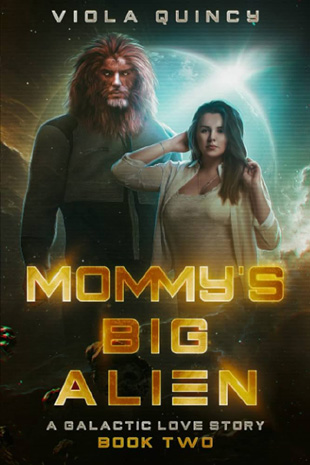
image c. 2024 Margaret Viney
Episode 565 - Son of Adam
Fuzz and Savrin have a greymuzzle hangout fireside chat. We talk about our thanksgiving days, books, furry cons, and 'broken' dogs.
LINKS
All the new Korps books in one spot- FurPlanet - Furry Books and Comics
NEW as of 12/1/24 Telegram Link: https://t.me/+KsOQnsQqWfA0Zjkx
Southpaws | creating and promoting The Queer Agenda | Patreon
Episode 565 - Son of AdamAutumn Steam Fur Sale 2024

With Autumn soon giving way to Winter, it's the perfect time to cozy up with a hot beverage and your favorite video games. Fortunately Steam has you covered with a limited time Autumn Sale of everyones favorites. Ranging from the high budget highly acclaimed titles to Indie hits, this sale is sure to have something for everyone. Act fast though, it ends on Dec 4th. Let's take a look at some highlights!
FWG Monthly Newsletter December 2024
Well, here we are at the closing of another year. I hardly know what to say after the events of November. We will get through the next few years just as we’ve weathered other storms, and we will do so with heads high, hearts open, and teeth bared if necessary.
One exciting thing is the imminent publication of the guild’s latest anthology, Tales from the Guild: Blood and Water, published through Fenris. The original plan was for a release at Midwest FurFest, but the publishing process is a slow one with lots of moving parts. Currently the cover art is being finished, so it’s close, but the publication date has had to be moved back a little.
What are your writing goals for 2025? If you’re not feeling great about the future, writing can be an escape–a way to live temporarily in a world where you control every detail. It’s also a beacon to declare that art (and the artist’s soul) will always triumph.
Along with the new year comes awards season, so if there are recently-published books on your to-read pile, this is a good time to bump them to the top. If you have recently-published works, this is also a good time to send in updates for your guild member profile and the suggested reading lists. If you have a book coming out soon, let us know so we can list it in future posts. Make it easy for potential readers to find what you’ve written!
Here are the current open markets for your short stories:
Spirit of the Wolf – Deadline March 31st 2025
The Second Hayven Celestia Anthology – Deadline July 15, 2025
Indecent Exposure – Deadline When Full
This Is Halloween – Deadline When Full
Children Of The Night – Deadline When Full
Furry/Lovecraftian/Erotic/University Themed Anthology – Deadline When Full
Please also check out the latest book releases from our members:
Shadow Sun, by Jess E. Owen. Released August 30th, 2024.
Legend of Ahya: Broken Empires, by Matthew Colvath. Released October 2nd 2024.
Space Dragons: Luxorian’s Crew, by Veo Corva. Released November 12th 2024.
Catfish and Other Stories, by K.C. Shaw. Released November 30th 2024.
Wolf Tech 3: The Alphas, by Adam Webster. Release date December 10th 2024.
Happy writing!
Kate Shaw